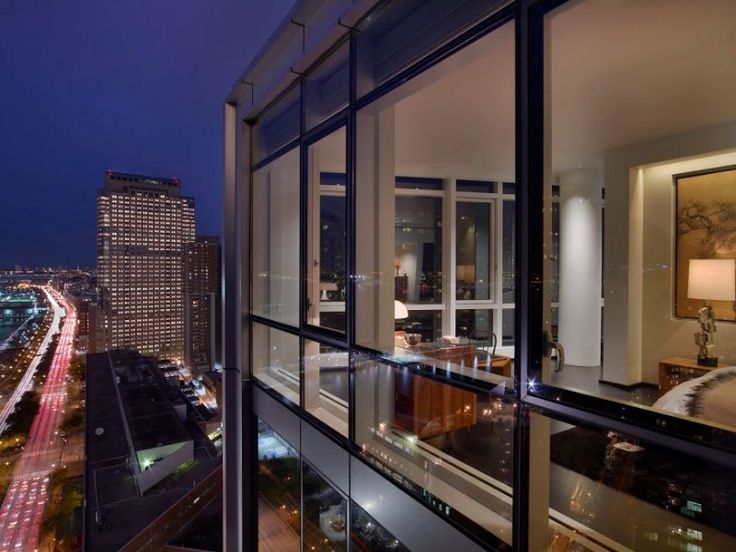
Most explanations for the rise of apartment living are a bit wishy-washy to me. But I’ve got a theory…
For a while now, we’ve been hearing about the death of the 4-bdr, 2-bath, large suburban home. And we’re seeing that playing out in the data.
However, when I listened to most people talk about why that shift is happening, I get the feeling that people are missing the point.
And generally the story you here is a bit romantic. The shift to inner-city apartments has been mostly a question of taste. The younger generations have just ‘fallen in love’ with inner-city lifestyle, and compact, low-maintenance, higher-density dwellings.
To me, that just sounds a little too fluffy to be driving a consistent and unmistakeable trend.
Do people really ‘love’ apartments? I doubt it. Other things being equal, I think everyone would like more space and more room to move.
Other things being equal, I kind of think everyone would like to live on a beautiful hobby farm on the Sunshine Coast like I do. I’m not trying to be cute. I just think, who wouldn’t want picturesque views and access to some of the best beaches in the world, if that was what’s available to them?
People tend to like the same things. That’s why our best suburbs are also our most expensive.
And so I don’t think it’s a love of apartments per se, rather, I think it’s what apartments can do for us.
And in my mind, that comes back to one thing: location, location, location.
Apartments are popular not because people like living in little boxes, but because apartments offer affordable options in sought-after areas.
But again, I think there’s a bit of romanticisation of inner-city life-style here. The idea the people have turned their backs on bigger houses just so they can be near their favourite café.
The BLAT is just to die for.
It probably is a factor, but I wonder if it’s the main game.
Rather, I wonder if the take-up of apartment living is more a result of the changing nature of work.
Researchers have identified a two-geared labour market when it comes to work and leisure.
That is, lower-educated workers tend to have more leisure time. They work predictable hours and regular clock-on and clock-off times.
Higher-skilled workers on the other hand often work longer hours, and often ‘work back late’. For higher-skilled workers, work often bleeds into leisure time.
As a result, leisure time is more highly valued, because it is scare. That means that higher-skilled workers will be willing to pay more to bring more leisure into their life, and typically have the disposable income to do so.
And the big factor in maximising leisure is controlling commutes. If you live closer to work, you spend less time in transit, and have more time to do what you want.
And so higher-skilled workers are willing to pay a premium to live closer to work. And that premium involves sacrificing a detached dwelling for an apartment or town-house.
And in that sense, apartments are popular for the same reason that fast-food is popular. It’s not the quality of the food, but the convenience and the time it frees up.
There’s also two factors at play here. Higher-skilled workers as individuals will have a greater preference for conveniently located higher-density dwellings. However, as a society, we have shifted towards higher-skilled employment with longer hours.
(Well actually, there’s been a split, with some people having too much work and some people not having enough, but the affect on the inner city is the same.)
And so not only are higher-skilled workers working longer hours, but we have more of them.
And it’s this shift in the nature of work – towards longer hours, and towards a greater share of high-skilled work – that in my opinion is really driving the trend towards higher-density living.
I think this is interesting because as investors it gives us something to work with. It’s hard to make investment decisions based on romantic ideas about life-style.
Should I invest in that apartment? How good is the café down stairs, really?
But if we see higher-density dwellings as providing an essential service – more free time – then we’ve got something to work with.
And our growth suburbs aren’t just going to be those with the funkiest cafes. Rather, any dwelling that frees up time will do well.
And that means that we can think about a high-rise in the inner city and a town-house in a middle ring suburb as providing a similar service – freeing up time.
And looking at it through this lens, suddenly there’s a whole lot more options available too us. We’re not shopping for ‘trendy’, we’re shopping for convenient.
And as my mate Kevin has shown us, there’s no shortage of options when it comes to alternatives to the basic housing model.
“Trendy” is still a driver, but in a time-poor world, “convenient” has real power.
What suburbs look high on the ‘convenient’ index to you?